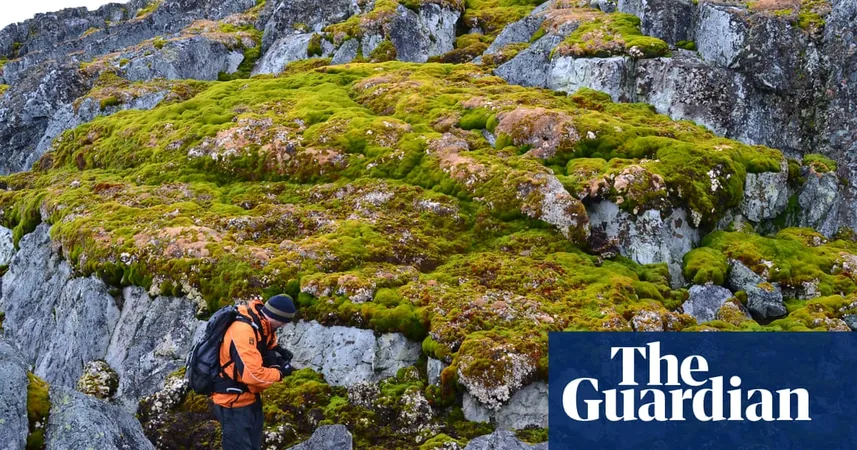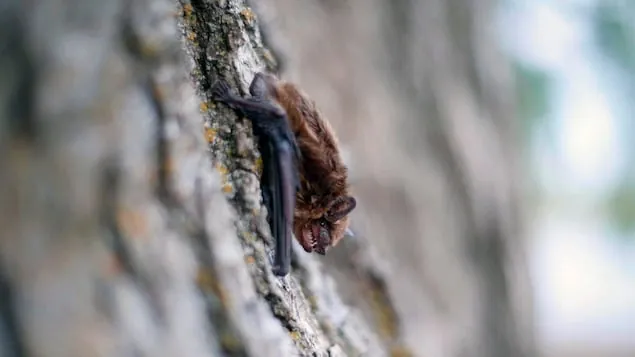
Unprecedented "Greening" of Antarctica: How Climate Change is Transforming the Frozen Continent
2024-10-04
Emergence of Plant Life in Antarctica
In an astonishing revelation, research has shown that plant cover in the Antarctic Peninsula has exploded more than tenfold over the past few decades, a direct indicator of the escalating climate crisis affecting this frigid region.
Satellite data analysis revealed that in 1986, less than one square kilometer of vegetation existed in the Antarctic Peninsula. By 2021, this figure surged to nearly 12 square kilometers. The research indicates that the expansion of plant life, predominantly mosses, has markedly accelerated since 2016—timed with significant declines in sea ice.
Impact of Global Warming
This green revolution on an otherwise icy landscape patterns the alarming extent to which global warming is reaching even the most remote parts of our planet. Scientists have warned that the emergence of vegetation in Antarctica could create opportunities for invasive species to take root, threatening the delicate balance of its unique ecosystem.
Similar Phenomena in the Arctic
Interestingly, similar "greening" phenomena have also been observed in the Arctic regions. Notably, in 2021, a meteorological milestone was reached when rain—rather than snow—fell on Greenland's ice cap summit for the first time in recorded history.
Scientific Insights and Observations
Dr. Thomas Roland from the University of Exeter, who co-led the study published in Nature Geoscience, emphasized the stark changes occurring in Antarctica. "The landscape remains predominantly snow, ice, and rock—only a minimal area is occupied by plant life," he stated. Yet, this small fraction has seen a dramatic increase, underscoring human-driven climate change's pervasive impact on even the most isolated terrains.
Biological and Ecological Shifts
As temperatures continue to rise, the potential for fundamental shifts in the region’s biology and landscape grows. “The ongoing warming trend will challenge the ecological character of this iconic and vulnerable environment,” Roland added.
A Case Study from Larsen Inlet
Highlighting the tangible effects of climate change, Professor Andrew Shepherd from Northumbria University shared an experience from his visit to Larsen Inlet two years ago. “We found a newly exposed beach, previously hidden beneath the Larsen Ice Shelf until its collapse in the late 1980s. It now houses a flowing river teeming with green algae—an astonishing transformation in just a couple of decades,” he remarked. "This area is a telling barometer of climate change, marking a tipping point as life gains a foothold."
Furthermore, the notable increase in moss growth since 2016 aligns with a significant reduction in sea ice around Antarctica. Researchers suspect that the warmer and wetter conditions emerging from reduced sea ice could significantly boost plant growth. “Mosses can colonize barren rock and lay the groundwork for soil development, creating conditions conducive for other plant species to thrive,” explained Dr. Olly Bartlett, another co-leader of the study from the University of Hertfordshire.
Concerns Over Invasive Species
Despite the harsh environmental conditions, soil in Antarctica is largely deficient, leading to negligible land vegetation. However, the rise in plant life is expected to enrich organic matter and enhance soil formation—a development that raises concerns about non-native invasive species potentially hitching a ride with eco-tourists and scientists visiting the continent.
Implications for Biodiversity
With Antarctica's two native flowering plants recently documented expanding their territory on nearby Signy Island, these findings highlight the urgent need for further study. The implications of rising temperatures and shifting ecosystems could reshape our understanding of biodiversity in these fragile regions. As humanity grapples with climate change, the lessons learned from Antarctica might not only inform conservation efforts but could also alert us to impending changes in ecosystems around the world.
Conclusion
Stay tuned as we follow this unfolding story—who knows what surprises await beneath Antarctica's melting ice?



 Brasil (PT)
Brasil (PT)
 Canada (EN)
Canada (EN)
 Chile (ES)
Chile (ES)
 España (ES)
España (ES)
 France (FR)
France (FR)
 Hong Kong (EN)
Hong Kong (EN)
 Italia (IT)
Italia (IT)
 日本 (JA)
日本 (JA)
 Magyarország (HU)
Magyarország (HU)
 Norge (NO)
Norge (NO)
 Polska (PL)
Polska (PL)
 Schweiz (DE)
Schweiz (DE)
 Singapore (EN)
Singapore (EN)
 Sverige (SV)
Sverige (SV)
 Suomi (FI)
Suomi (FI)
 Türkiye (TR)
Türkiye (TR)